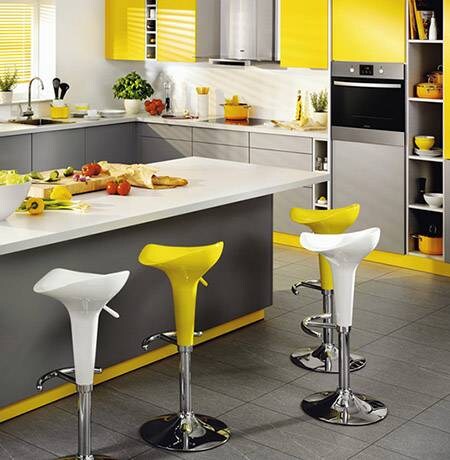
The Ultimate Guide To Cooking Measurements
One of the most common cooking errors is incorrect measurements. When it comes to baking a cake or preparing a sauce from scratch, even the slightest inaccuracy can lead to culinary disasters. Ensuring perfect quantities is crucial to a delicious outcome.
Our ultimate guide is here to help you navigate and convert these cooking measurements, so you can produce meals to be proud of time after time. We’ll show you how to convert:
We’re here to make your switch to eco-friendly washes effortless. Just follow our seven tips to wash your clothes sustainably:
· Cups to millilitres (ml)
· Tablespoons (tbsp) to teaspoons (tsp)
· Litres (L) to fluid ounces (fl oz)
· Ounces (oz) to grams (g)
· Celsius (˚C) to Fahrenheit (˚F)
· Celsius to fan and gas mark
What Are The Different Ingredient Measurements?
There’s a way of measuring any ingredient, from millilitres for liquids to ounces for dry food. Read on to learn how to convert measurements in cooking.
Converting Cups To Millilitres
Although traditionally an American measurement, cups are commonly used in recipes, especially baking. But if you prefer to stick to metrics, here’s how to convert cup measurements to millilitres:
| Cups | Mililitres (ml) |
| 0.5 | 118ml |
| 1 | 237ml |
| 2 | 473ml |
| 3 | 710ml |
| 4 | 946ml |
Converting Tablespoons To Teaspoons
Teaspoons and tablespoons are often reserved for small quantities of ingredients like herbs and spices. As a rule of thumb, three teaspoons make up a tablespoon:
| Tablespoons (tbsp) | Teaspoons (tsp) |
| 1 tbsp | 3 tsp |
| 2 tbsp | 6 tsp |
| 3 tbsp | 9 tsp |
| 4 tbsp | 12 tsp |
| 5 | 15 tsp |
Converting Litres To Fluid Ounces
If you want to measure liquids and a tablespoon won't cut it, litres and fluid ounces are good alternatives. One Litre equates to 34 fluid ounces, but here's a complete conversion breakdown:
| Litres (L) | Fluid Ounces (fl oz) |
| 0.5L | 17 fl oz |
| 1L | 34 fl oz |
| 2L | 101 fl oz |
| 3L | 101 fl oz |
| 4L | 135 fl oz |
| 5L | 169 fl oz |
Converting Ounces To Grams
Although metrication came to the UK in the early 80s, some recipes still use ounces. If you prefer sticking to metric grams, look no further than our conversion table below:
| Ounces (oz) | Grams (g) |
| 1oz | 28g |
| 2oz | 57g |
| 3oz | 85g |
| 4oz | 113g |
| 5oz | 142g |
| 10oz | 283g |
| 20oz | 567g |
What Ingredient Measurement Tools Should You Use?
Many measuring tools are available, each with its own benefits and purpose. Here are the most popular measuring tools for ingredients:
· Measuring spoons. These are perfect for small volumes, like bicarbonate of soda or cooking oil.
· Measuring jugs. Often with millilitre and fluid ounce readings, jugs are used to measure liquids.
· Measuring cups. Great for dry or liquid ingredients, use these when you’re following a cup-based recipe.
· Scales. You can find both digital and manual scales; often with a choice of measurement options, scales work best for dry ingredients.
What Are The Different Temperature Measurements?
It’s not just the ingredient measurements that differ. You’ll find different ways of measuring temperatures in the kitchen too. Getting the temperature of your oven spot on is a crucial step and just as important as having precise quantities.
Converting Celsius To Fahrenheit
Celsius and Fahrenheit are the main temperature measurements used everywhere, from weather reports to recipes and more. We've converted the most common cooking temperature for you below:
| Celsius (˚C) | Fahrenheit (˚F) |
| 100˚C | 212˚F |
| 150˚C | 302˚F |
| 180˚C | 356˚F |
| 200˚C | 392˚F |
| 220˚C | 428˚F |
Converting Celsius To Fan and Gas Mark
When popping a cake in the oven, you'll notice that some recipes recommend a gas mark or fan temperature. Gas Mark is a setting used in gas ovens and hobs, whilst fan refers to the scale in fan ovens. The fan measurement is around 20˚C less than conventional Celsius. If all these different measures have you confused, look no further than our guide to Celsius, fan and gas mark temperatures below:
| Celsius (˚C) | Fan & Gas Mark |
| 140˚C | 120 Fan / Gas Mark 1 |
| 150˚C | 130 Fan / Gas Mark 2 |
| 160˚C | 140 Fan / Gas Mark 3 |
| 180˚C | 160 Fan / Gas Mark 4 |
| 190˚C | 170 Fan / Gas Mark 5 |
| 200˚C | 180 Fan / Gas Mark 6 |
| 220˚C | 200 Fan / Gas Mark 7 |
What Temperature Measurements Tools Should You Use?
If you need to heat your oven to a specific temperature, this can easily be set on the appliance itself. But if you want to measure the internal temperature of food, especially important for meat like chicken, use a manual thermometer.